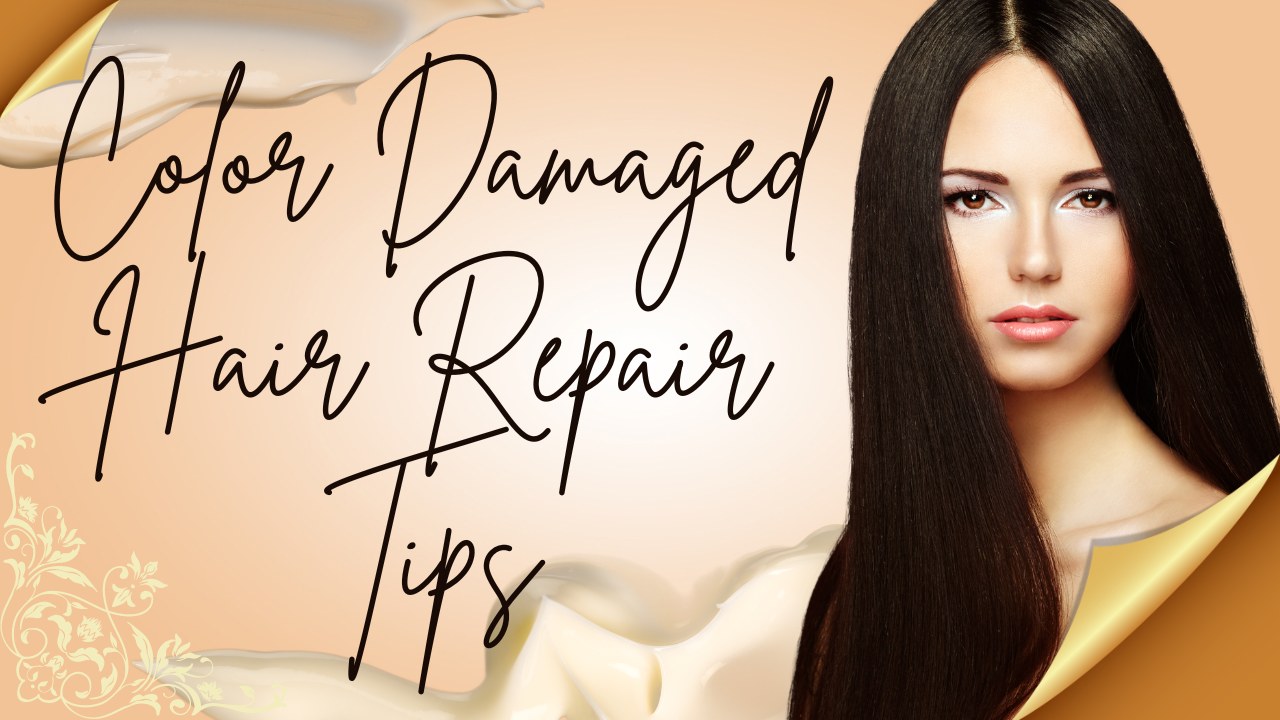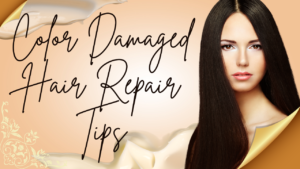Color Damaged Hair Repair
Breathe new life into color damaged hair Repair.
Color Damaged Hair Repair: Nothing beats the joy of fresh new hair color. But the excitement can quickly fade as the vibrant colors lose their shine and the hair becomes dry, brittle and prone to breakage. Don’t be afraid, colorful friends! This comprehensive guide will equip you with the knowledge and strategies to repair damaged hair as well as keep your color looking its best.
Understanding the culprit: How color damages hair.
The coloring process, especially bleaching, changes the structure of the hair. Here’s a description of what happens:
Raised Cuticles: Hair color works by raising the hair cuticles, the outermost layer that protects the inner core. This allows the color pigments to penetrate into the hair roots. However, raised cuticles can also be caused by:
Moisture loss: Moisture is lost more easily, leaving hair dry and brittle.
Increased Porosity: Hair becomes more porous, which means it more easily absorbs outside elements, including harmful environmental factors.
Color Fading: Color molecules can easily escape from the hair pores, causing color fading.
Two-Pronged Approach to Repairing Colored Hair
To truly revitalize colored hair, we need to focus on both damage and color protection. Here is a detailed description of the strategies:
1. Strengthening Hair:
Deep Conditioning: Your hair craves deep conditioning treatment like a thirsty traveler needs an oasis. Aim for 1-2 treatments per week. Look for content like:
Protein: Keratin, wheat protein, or rice protein help rebuild the hair shaft, making it stronger and more flexible.
Moisture-Rich Ingredients: Coconut Oil, Shea Butter And Argan Oil Replenish Moisture Lost During Dyeing.
Targeted hair masks: Consider using a mask specifically formulated for color treated hair. These masks often contain a blend of color-protecting antioxidants as well as proteins and moisture-rich ingredients.
Protein Treatment: Used sparingly (once a month), protein treatment can be a game-changer. However, be careful of overdosing on protein, which can make hair hard and brittle. Choose gentle formulas designed for color-treated hair.
2. Protecting Your Complexion:
Color-Safe Shampoo and Conditioner: Ditch your regular shampoo and conditioner for a color-safe, sulfate-free formula. Sulfates can strip hair of its natural oils and fade color.
Sulfate-free shampoos: These gently cleanse without stripping the pigment. Look for words like “gentle cleaning” or “color-safe” on the label.
Color-fixing conditioners: These conditioners can add a bit of color to your hair, helping to maintain vibrancy between salon visits. Doing this creates a barrier between the heat source and your hair.
Washing and Washing Strategies:
Wash less, condition more: Washing too often can cause color loss. Aim to wash 2-3 times per week and focus on conditioning to replenish moisture.
Cool it off: Hot water is the enemy of colored hair. It opens the hair cuticles, allowing the color to come out. Use lukewarm water to wash and rinse. It helps keep the cuticle closed, maintaining moisture and color.
Additional protective measures:
Leave-in conditioner: your new best friend! Leave-in conditioners provide a protective layer, protecting the hair from environmental aggressors like UV rays and pollution that can damage both the hair and the color.
Heat Styling with Caution: Heat styling tools can cause further damage to the hair. Here’s how to minimize how to minimize the effects:
Heat Protectant Spray: Apply a heat protectant spray before each styling session. Doing this creates a barrier between the heat source and your hair.
Low heat settings: Whenever possible, use low heat settings on your styling tools.
Air-Drying: Whenever possible, skip heat styling altogether and let your hair air-dry.
Sun protection: UV protection is important: UV rays can damage both hair and color. Apply a leave-in conditioner with SPF protection when spending time outside. Look for products specifically formulated for hair, as some sunscreens can leave a greasy residue.
Bonus tip: Trim your hair regularly (every 6-8 weeks) to remove split ends. Split ends can reach the hair roots, making the damage appear even worse.
Color Damaged Hair Repair products:
Best Hair oils & Products linked below:
Remember: consistency is key! By incorporating these strategies into your routine, you can repair damaged hair, maintain vibrant color, and keep your hair looking its best.
For severely damaged hair: Color Damaged Hair Repair.
If your hair is in color SOS status with major damage, don’t despair! A hair stylist can be your color guardian angel. They can assess the level of damage and recommend targeted treatment. Here’s what you can explore:
Professional Treatments: Treatments like Ola plex can help rebuild broken bonds within the hair shaft, making it significantly stronger. Keratin smoothing treatments can cover the hair cuticles, add shine and reduce hair loss while providing some protection.
Personalized Plan: A hair stylist can create a personalized plan for your specific hair needs.
This may include a combination of salon treatments, at-home deep conditioning, and product recommendations for ongoing care.
Remember, a hair stylist can be your best resource for reviving severely damaged color-treated hair. They can help you have healthy, vibrant hair once again.


